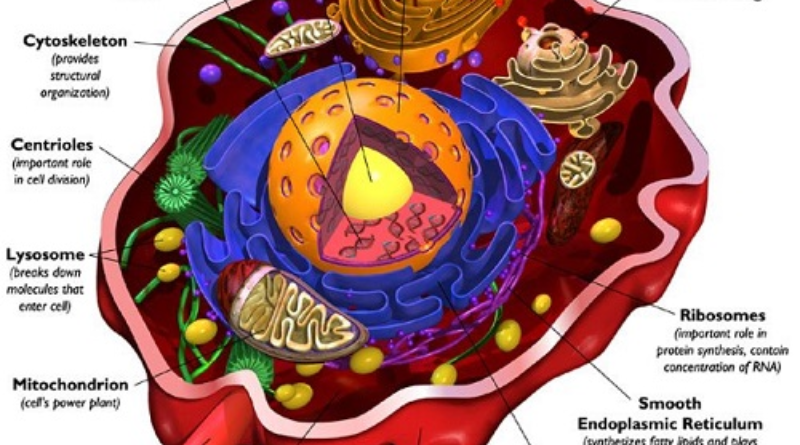Does DNA disprove evolution?
Modern research in biochemistry brings into question the following “truths” of evolution.
“Truth” 1: So-called “intelligent design” is biblical creationism in disguise.
The conclusion of intelligent design flows naturally from the data itself—not from sacred books or sectarian beliefs . . . The reluctance of science to embrace the conclusion of intelligent design . . . has no justifiable foundation. . . . Most people, including many important and well-respected scientists, just don’t want there to be anything beyond nature (Michael Behe, molecular scientist from Lehigh University, Darwin’s Black Box: The Biochemical Challenge to Evolution, 1996).
I am sorry to say, freedom of inquiry in science is being suppressed. Under a new anti-religious dogmatism, scientists and educators are not allowed to even think thoughts that involve an intelligent creator. They cannot even mention the possibility that—as Newton or Galileo believed—these laws were created by God or a higher being. They could get fired, lose tenure, have their grants cut off. This can happen. It has happened. (Ben Stein, author, actor, film-maker in Expelled: No Intelligence Allowed).
“Truth” 2: Evolution is a fact supported by scientific evidence upon which every scientist agrees.
Scientists who go about teaching that evolution is a fact of life are great con-men, and the story they are telling may be the greatest hoax ever (Dr. T. N. Tahmisian, Atomic Energy Commission, USA).
Evolution is a fairy tale for grown-ups. This theory has helped nothing in the progress of science. It is useless (Professor Louis Bounoure, Director of Research, National Center of Scientific Research).
[Evolutionary theory] is still, as it was in Darwin’s time, a highly speculative hypothesis entirely without direct factual support . . . (Michael Denton, molecular biologist)
Over 400 scientists are “convinced by new scientific evidence that Darwinian evolution is deficient.”
“Truth” 3: Life began as simple, single-celled organisms
Darwin wrote his theory in the 19th century when it was believed that a cell was just “a homogeneous globule of protoplasm.” They did not know about DNA or the complex processes that go on inside a cell. Today, we know that there is no such thing as a “simple” cell. (See drawing above of a “simple” cell.)
Each cell in the human body contains more information than in all thirty volumes of the Encyclopedia Britannica. It’s certainly reasonable to make the inference that this isn’t the random product of unguided nature, but it’s the unmistakable sign of an Intelligent Designer (Walter L. Bradley, The Mystery of Life’s Origin).
Biochemist Michael Behe (Darwin’s Black Box) argues that many biological systems are “irreducibly complex” at the molecular level. Behe gives the following definition of irreducible complexity:
Behe starts with the example of a mousetrap; he claims that a standard mousetrap is “irreducibly complex”. Such a mousetrap consists of:
1) a flat wooden platform to act as a base
2) a metal hammer, which does the actual job of crushing the little mouse
3) a spring with extended ends to press against the platform and the hammer when the trap is charged
4) a sensitive catch that releases the hammer when slight pressure is applied
5) a metal bar that connects to the catch and charged hammer (there are also assorted staples to hold the system together)
Behe then continues with his logic as to why this system is “irreducibly complex”:
Which part could be missing and still allow you to catch a mouse? If the wooden base were gone, there would be no platform for attaching the other components. If the hammer were gone, the mouse could dance all night on the platform without becoming pinned to the wooden base. If there were no spring, the hammer and platform would jangle loosely, and again the rodent would be unimpeded. If there were no catch or metal holding bar, then the spring would snap the hammer shut as soon as you let go of it…
A mousetrap cannot “evolve” slowly, bit by bit. All of the parts must be in place at the same time. The same with such things as DNA.
“Truth” 4: Evolution is possible over billions and billions of years
Evolutionists claim that although we have not actually observed these things happening, that does not mean that they are impossible. They say it simply means they are extremely improbable. It is extremely improbable that you can toss a coin and have it come up heads 100 times in a row. But if you toss coins long enough, eventually it will happen. Evolutionists think the world has been around long enough for all these highly improbable things to happen.
If you took all the carbon in the universe and put it on the face of the earth, allowed it to chemically react at the most rapid rate possible, and left it for a billion years, the odds of creating just one functional protein molecule would be one chance in a 10 with 60 zeros after it. In other words, the odds for all practical purposes are zero. That’s why even though some people who aren’t educated in [molecular science and DNA research] still believe life emerged by chance, scientists simple don’t believe it anymore. (Walter L. Bradley, The Mystery of Life’s Origin).
So, at least for me, it takes much more faith to believe in evolution than to believe in an intelligent designer.
© Copyright 1999 James N. Watkins
Related resource
Ray Comfort has created a compelling argument for intelligent design. I would enthusiastically recommend it to any honest, inquirer willing to look at the evidence.
If you found this post helpful, please share it on your social networks. Thanks!

